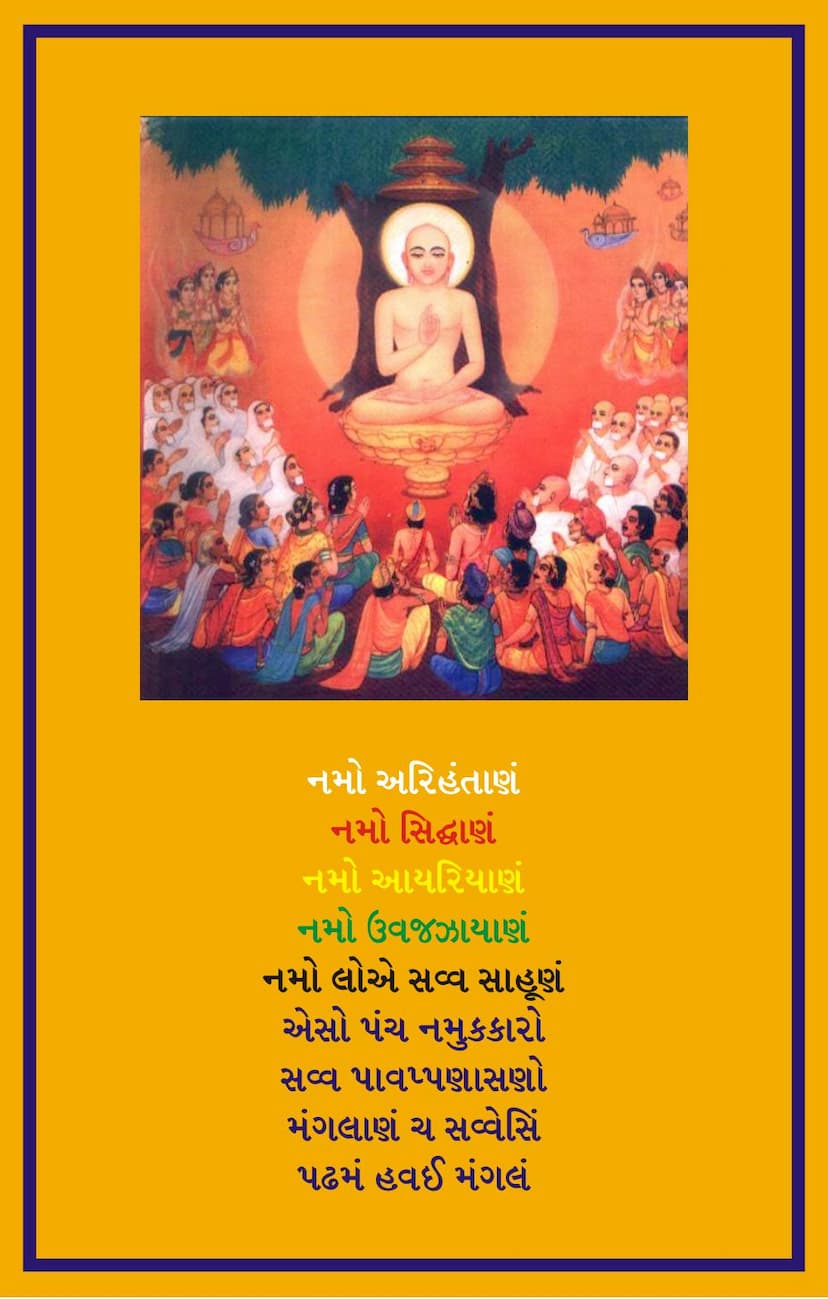Agam 09 Ang 09 Anuttaropapatik Sutra Sthanakvasi
Added to library: September 1, 2025

Summary
This Jain text, the Anuttaropapatik Sutra, is the ninth Anga (limb or section) of the Jain Agamas, attributed to the teachings of Bhagwan Mahavir. The provided text is a detailed exposition and commentary (the 'Arthabodhini' commentary) by Ghasilal Maharaj, published by A B Shwetambar Sthanakvasi Jain Shastroddhar Samiti.
Here's a comprehensive summary based on the provided pages:
1. Title and Authorship:
- Book Title: Agam 09 Ang 09 Anuttaropapatik Sutra Sthanakvasi
- Author: Ghasilal Maharaj
- Publisher: A B Shwetambar Sthanakvasi Jain Shastroddhar Samiti
- Commentary Title: Arthabodhini (meaning "that which imparts meaning")
2. Core Theme: The Anuttaropapatik Sutra, as the name suggests ("Anuttara" meaning unsurpassable, "Upapatik" meaning rebirth/residence), deals with the lives and spiritual journeys of individuals who attain "Anuttara" realms (the highest celestial abodes) after performing severe austerities and spiritual practices. It highlights the path to liberation by renouncing worldly pleasures and dedicating oneself to rigorous spiritual discipline.
3. Structure of the Sutra (as per the text):
- The Sutra is part of the ninth Anga.
- It contains 3 Varga (sections or classes).
- Each Varga contains a specific number of Adhyayana (chapters or studies).
- First Varga: 10 Adhyayana
- Second Varga: 13 Adhyayana
- Third Varga: 10 Adhyayana
- The total number of Adhyayana is 33.
- These Adhyayana narrate the life stories of 33 great souls (Mahatmas), including princes like Jaali, Mayali, Dhannya, etc.
4. Key Content and Commentary Highlights:
- Mangalacharan (Invocation): The book begins with traditional Jain invocations (Navkar Mantra) and praises to Bhagwan Veer (Mahavir) and the lineage of gurus.
- Commentary by Ghasilal Maharaj: The commentary is praised for its clarity, detail, and ability to explain complex concepts, making the teachings accessible to all ages and levels of understanding. It is noted that this commentary is comprehensive, unlike some earlier Sanskrit commentaries which were brief.
- Historical and Geographical Context: The text references historical figures like King Shrenik (Bimbisara) and Ajatashatru (Kunika), and cities like Rajgriha, Champa, Hastinapur, Pataliputra, Vaishali, Saket, and Kakanadi. It notes that the exact location of Kakanadi and Tangika remains unknown to archaeologists, while others like Hastinapur and Rajgriha have yielded significant findings related to Jain and non-Jain cultures.
- Emphasis on Dharma Kathas: Unlike some other Agamas that delve into philosophy, the Anuttaropapatik Sutra is characterized as containing primarily "Dharma Kathas" (religious narratives or exemplary life stories).
- The Lives of the Thirty-three Great Souls: The Sutra details the lives of these individuals who, after living in worldly prosperity, renounced it all through profound spiritual insight. They practiced severe austerities, embraced renunciation, and ultimately attained the highest celestial realms (Anuttara Viman).
- Example of Dhannya Kumar: The Third Varga's first Adhyayana focuses on Dhannya Kumar. His story is presented as a central piece, highlighting his extraordinary renunciation, severe penance, and the detailed description of his emaciated body due to his austerities. His exemplary life showcases the Jain ideal of asceticism and the pursuit of spiritual liberation. The text emphasizes the importance of his story for understanding the depth of Jain penance.
- Teachings on Renunciation and Asceticism: The commentary underscores the importance of renouncing worldly possessions and pleasures to achieve spiritual goals. The lives of the individuals described serve as inspiration for the "Brahmacharya" (celibacy) and "Aparigraha" (non-possession) vows.
- Samavsaran Description: The text includes a detailed description of the "Samavasaran" (the divine assembly convened by a Tirthankar), explaining its divine creation by attendant deities, the use of unadcontaminated (achitta) materials, and refuting the notion of "Savadh Puja" (worship involving harm to living beings).
- Rules for Swadhyay (Study): Several pages are dedicated to specific rules for studying the Sutra, including:
- Preferred times for study (first and fourth quarters of day and night).
- Prohibited times for study (dawn, dusk, noon, midnight, and specific periods around sunrise/sunset).
- Restrictions related to women in menstruation.
- A detailed list of 32 "Aswadhyay" (periods of non-study) related to celestial phenomena (like meteor showers, halos, thunder), natural occurrences (earthquakes, strong winds), and human/social events (death, war, festivals).
- Linguistic and Scholarly Aspects: The commentary notes that the language and terminology used in the western Indian version of the text suggest its compilation and refinement in western India. It also references translations and discussions by scholars like L.D. Barnett and Weber.
- The Role of the Publisher: The "Akhil Bharat Shwetambar Sthanakvasi Jain Shastroddhar Samiti" is highlighted for its significant role in preserving and publishing Jain scriptures, with a specific appeal for community support.
- The Significance of the Commentary: The "Arthabodhini" commentary by Ghasilal Maharaj is presented as a monumental effort to make the profound teachings of the Anuttaropapatik Sutra accessible through Sanskrit, Hindi, and Gujarati translations and explanations.
5. The Anuttara Realms: The individuals described in the Sutra achieve rebirth in the "Anuttara Vimanas" – the highest celestial abodes, indicating a significant spiritual advancement before their final liberation.
In essence, the Anuttaropapatik Sutra, through the lives of 33 exceptional souls and its detailed commentary, serves as a guide to understanding the profound impact of renunciation, severe austerities, and unwavering devotion to spiritual principles in achieving the ultimate goal of liberation (Moksha) in Jainism.